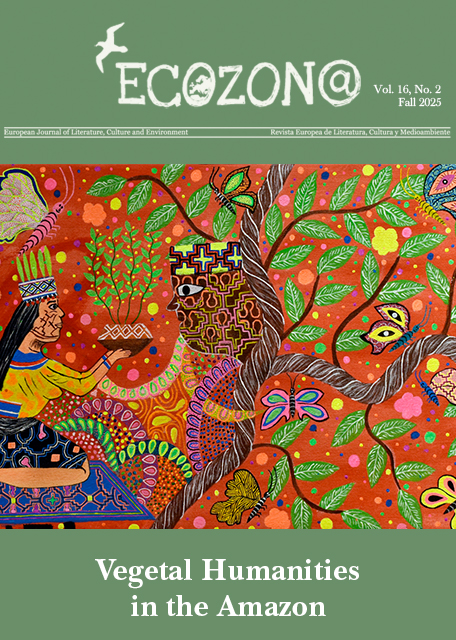Review Essay: Developing Empathy Towards Other-than-human Animals through Cultural and Literary Representations
DOI:
https://doi.org/10.37536/ECOZONA.2022.13.2.4399Abstract
This review essay focuses on the animal question and the role that cultural and literary representations of other-than-human animals may have in raising awareness of the severity of the situation and eventually developing a more egalitarian and empathetic society. This paper reviews two different approaches to the issue: an innovative empirical study of the impact that narratives may have on our attitudes towards other species conducted in Poland by Wojciech Malecki, Piotr Sorokowski, Boguslaw Pawlowski, and Marcin Cienski and presented in Human Minds and Animal Stories: How Narratives Make Us Care About Other Species; and a qualitative interdisciplinary research on the animal question in Spain in Spanish Thinking About Animals edited by Margarita Carretero-González.
Downloads
Downloads
Published
Issue
Section
License
Authors who publish with this journal agree to the following terms:
a) Authors retain copyright and grant the journal right of first publication with the work simultaneously licensed under a Creative Commons Attribution License that allows others to share the work with an acknowledgement of the work's authorship and initial publication in this journal (CC BY-NC for articles and CC BY-NC-ND for creative work, unless author requests otherwise.
b) Authors are able to enter into separate, additional contractual arrangements for the non-exclusive distribution of the journal's published version of the work (e.g., post it to an institutional repository or publish it in a book), with an acknowledgement of its initial publication in this journal.
c) Authors are permitted and encouraged to post their work online (e.g., in institutional repositories or on their website) prior to and during the submission process, as it can lead to productive exchanges, as well as earlier and greater citation of published work (See The Effect of Open Access).










